C.P. Lesley's Blog, page 8
November 18, 2022
Two Steps Forward?
About a month ago, I announced the entry into our family of two kittens. Almost five weeks later, I am happy to report that the boys are settling in just fine. They’ve recovered from their initial funk—hardly surprising once we realized we may have been the first strangers they had encountered, and strangers who packed them up and took them to a completely unfamiliar place, at that. They have learned to trust us to feed them and play with them and welcome their snuggling with us at night. And they have spread out through the house from that one room where they spent their first week. They’ve even acquired a few likes on TikTok, although of course they don’t know that.

Which is all to the good, I think we can agree. So why the question mark in my title? Well, that’s because we already had a cat, as I mentioned in my previous post: a fourteen-year-old female named Mahal, who was once a feral kitten, and her reaction was always something we couldn’t predict. I had hoped that she might see the kittens, because they are still about one-quarter her size, as non-threatening. She once came into the house as a kitten, after all, and the then-resident cats accepted her with little fanfare and no fireworks; she might have done the same.
She might have, but she didn’t. The arrival of newcomers, no matter how small, appears to have thrown her back into the rules of feral kittenhood—fight or flight. For the first week, she ignored the babies entirely. She spent the second mostly in isolation, emerging only to use the litter box and eat the occasional meal. By the third, she had shifted into “this shall not stand” mode, with hissing and scratching, interspersed with retreats to her special hiding place.
She does have cause for complaint. Given half a chance, the kittens eat her food and drink her water, even though they have food of their own and water that is exactly the same. But the toys they love, the cat condo, even the sisal scratching post are things in which Mahal lost interest long ago. And we live in a spread-out ranch house, one where three cats could easily share space without interacting much, especially when Mahal has rarely claimed entire rooms as her own.

Through constant monitoring and as-needed squirts of water, we have prevented conflict from escalating, but the kittens have learned to give her a wide berth whenever she walks down the hall. On the rare occasions when we leave the house, we still shut them back in that original room to protect them. I’ve gotten better at keeping one eye on the coffee grinder and the other on Mahal, but the need to follow her around really cuts into my morning prep time.
Still, there are moments of hope. Several times over the last few days, Mahal has managed to relax in the family room without constantly watching for kittens. She has patrolled the house and even entered rooms where they are without fluffing out her tail and slinking like one of the Mission Impossible agents entering an enemy fortress. She no longer reacts every time little paws thunder through the living room. I can imagine a time when she might accept that they are here to stay.
Don’t misunderstand me. I know why Mahal reacts as she does. She is a cat, and she sees the kittens as intruders she didn’t ask for or want. I’m sure she’ll come round eventually. But until that happens, I plan to keep that water squirter handy and give her lots of treats and pets when she manages to avoid “flight or fight.”
May we hope even to see a version of this one day? (That’s Mahal on the right, with the older cats who welcomed her.) Be sure that I'll post it if we do!

Photographs of the family cats © 2010–2022 C. P. Lesley.
November 11, 2022
Interview with A. E. Wasserman
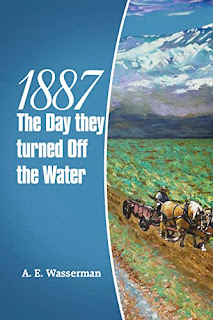 As must be clear by now, I am not a natural on social media. But one element of my limited involvement in Facebook, in particular, that has brought me joy is the opportunity to connect with other writers whose work I might otherwise never have encountered. A. E. Wasserman—the author of a historical mystery series featuring Lord Langsford, a rather troubled but gifted and personable British nobleman, as well as many other novels—is one example.
As must be clear by now, I am not a natural on social media. But one element of my limited involvement in Facebook, in particular, that has brought me joy is the opportunity to connect with other writers whose work I might otherwise never have encountered. A. E. Wasserman—the author of a historical mystery series featuring Lord Langsford, a rather troubled but gifted and personable British nobleman, as well as many other novels—is one example.I first encountered Lord Langsford in The Notorious Black Bart 1883: The Journey Back , Wasserman’s delightful and light-hearted attempt at recreating a dime novel. I then moved forward in time, through books set in 1884, 1885, 1886, and 1888. I enjoyed them all, and I am delighted that their author agreed to answer my questions. Her 1887 The Day They Turned Off the Water has just come out, but by reading on, you will also find out more about Langsford, his series, and how it came to be.
You mention in your author’s note that you’ve been writing fiction since you were fourteen. How did you come up with the central character of this series, Lord Langsford?
Originally, I had a tale to tell, and sadly, it was turning out to be a very boring one. I didn’t like it; I knew my readers wouldn’t. I was struggling. Then one night at 2 am (I write at night) this person elbowed his way into a carriage, barging into the scene. Interrupting.
I couldn’t see this rude stranger very well. Old? Young? Fat? Skinny? He was very blurry. But I kept writing, and he slowly came into focus: peerage; young, handsome, a full six-feet, trim with a short-cropped beard and stylish mustache. As I got to know him, I soon realized the story needed this strong personality, Langsford. In fact, he took over the entire book—carried it so well that he was the one who started the Mystery Series. It’s all his fault.
Later, an intuit, after reading the first book, told me I was channeling a real person from long ago. Who knows? Certainly interesting to contemplate.
But I do know this: Langsford is much smarter than I.
What can you tell us about Langsford himself?
At the young age of eighteen, Langsford inherited his title and fortune from his father. He feels the pressure to carry on, have an heir, preserve the family fortune for future generations. He is a caring, sensitive sort, handsome, a dashing figure, but he struggles with who he is, what he wants, and what he must do.
Langsford is in love with someone he can never marry—remember, it is the Victorian Era, when everything and everyone must be perfect and anything less must be concealed (as opposed to now, when everything is revealed—often TMI). Thus Langsford proceeds to do and be what society expects him to do and be. He goes against his basic nature, but he has no choice, in spite of his ever-present internal conflict. It’s the Victorian Era.
The series alternates between full-length novels featuring Langsford and novellas that focus on other characters in your story world. What do you gain from varying your approach in this way?
The even-numbered years are full novels: 1884 No Boundaries, 1886 Ties That Bind, and 1888 The Dead & The Desperate. The odd years are spin-off novellas that ended up being written because readers wanted to know more about what happened to other characters—the “rest of their stories,” if you will. They weren’t willing to let go—the readers, I mean. And I suspect the characters weren’t either. There are many touchpoints between all the characters in the full novels. The feedback from readers regarding the novellas has been positive, and I’m glad to tell more stories about these secondary characters.
1887 is, like the other novels set in odd-numbered years, one of the books where Langsford is present only in the background. Introduce us, please, to Sally and explain her past association with Langsford.
One must go back to the novel 1886 Ties That Bind, where Langsford, visiting San Francisco, accidentally crosses paths with Miss Sally Baxter, a beautiful ranch gal who packs a pistol in her purse. This creates an exciting juxtaposition with an English Lord and a California rancher.
Sally is a force to be reckoned with, and Langsford is often dumbstruck by her. She certainly is outside any Victorian boundaries he is familiar with. Although taking place during the same years, the “Old West” is far not only in distance from Victorian London but from London’s society as well. To say much more about Sally and Langsford, well, sorry. Spoilers.

Who is Jake, and how does he get himself into trouble that affects Sally as well?
Jake owns and runs the Double Bar Ranch. When a gunman with a bad attitude shuts off the water source, an altercation between Jake and the bad guy ends up with the gunman dead. This sets off a story with exciting twists and turns and a lot of angst.
Remember Sally, the ranch gal with the pistol in her purse? Her parents originally owned the Double Bar Ranch, and now she and Jake do. It’s up to Sally to prove Jake’s innocence before he is found guilty and hanged, and the ranch lost. Can she? Will she?
Say a few words, please, about the importance of water in Jake and Sally’s world, especially at this moment in time.
Water was, and still is, the true “gold” in California. Rains and snows are seasonal with long dry summers. Today, as in 1887, irrigation canals and “ditches” deliver water from the rivers flowing with melted snows from high up in the Sierra Mountains.
As a matter of fact, when we had our horse ranch in the Sierras, there was a “ditch” (5 ft wide x 3 ft deep) that had been hand-dug in 1895. People in California depended, and still do, on canals and ditches. Water laws have evolved over the last 135 years, but the need for water continues.

An important—and often unsettling—element in this novel is the racism directed at Native Americans and other people of color by nineteenth-century white society. Explain, please, who Kacha is and how discrimination worsens his situation—and Jake’s.
Historical fiction provides a natural compare/contrast between “then” and “now.”
Settlers were mainly Europeans who expected everyone to look and act just like them. Anyone else was deemed uncivilized, and the indigenous peoples weren’t considered “humans.” With both their numbers and technology, settlers and miners overpowered the tribes.
Kacha is a Tachi-Yokut, part of a group of tribes that ranged throughout California’s Central Valley and up into the Sierras, including the location where our ranch was. Because Kacha was present during the incident between Jake and the gunman, he was arrested. The law did not consider Kacha a person; he had zero rights—he couldn’t even testify for Jake. He was just a “digger injun.”
Border Collies play an important role in your novels and in your life. Please tell us a bit about that element of your work.
Every book has a Border Collie tucked within its pages, just as every book has a horse on its cover—a nod to all the beloved beasts I’ve had in my life. I’ve had both Border Collies and dressage horses for years, and I’ve written for both dog and horse magazines, often having my own column. Writing has been interwoven all along.
Today my current Border Collie, Topper, is my muse. As a matter of fact, he was actually born along the Settler’s Ditch that first appears in 1886 Ties That Bind. Did Langsford lead me to this nine-week-old pup? Who knows? Topper isn’t saying.
Topper and I hike high in the mountains where he “herds words” to me. I get most of my ideas when we are together on a 9,000-foot mountain. You can find him on Facebook as Topper The Muse. He now has a seven-month-old (unrelated) “sister,” Tess, who is whip-smart and keeps us both on our toes.

This novel has just appeared. Are you already working on the next, and if so, can you tell us anything about it?
I am always working on the “next” book. In fact, there are six more books either floating in my head, or as rough-drafts.
Book 4 in the Langsford Mystery Series is underway. I may just have a double helix plot going, with a dead guy along with some political criminals threading their way through it. We shall see what Langsford decides.
Sally proved to be such a strong character, that I’ve been told she needs her own “series,” so I may just do a trilogy with her. There definitely is a lot of “story” that swirls around Sally.
Finally there is a two-part saga set in the 1770s. I am working with an Irish historian on this tale. It is based on a delicious true story of an Irish lad, age fourteen, who was kidnapped by American Colonial sailors and dragged aboard their ship. When they land in Philadelphia, he jumps ship and runs—right into the American Revolution.
Do you think Border Collie Tess is helping Topper herd all these my way? I am “double-teamed.” Now for time to write them all!
Thank you so much for answering my questions!

A. E. Wasserman is the author of the Langsford Mysteries, starting with 1884 No Boundaries. Find out more about her, her books, and Topper the Muse at https://aewasserman.com.
Images: photograph of the Kings River, central to the plot of 1887 The Day They Turned Off the Water, and line drawing of Tulare Lake in 1875 both public domain via Wikimedia Commons; photograph of Topper herding words © A. E. Wasserman; photograph of A. E. Wasserman and Topper the Muse © Pamela Corey, Fur Family Photos, LA.
November 4, 2022
Bookshelf, Fall 2022
Another season, another review of the current state of my groaning bookcases. This is just a small sampling of the books I am enjoying or expect soon to enjoy as early fall gives way to November and the arrival of cold weather, if not actual winter. As it happens, they are all historical fiction, and three are historical mysteries. This is, of course, because I read extensively for my podcast, now officially ten years old. But I do read contemporary fiction as well. Most important from my point of view, I have reduced my reading of other people’s novels to proof Song of the Storyteller, the next book in my ongoing series, for publication early next year.
More on that soon. For now, here are some lovely books to enliven those lengthening evenings.
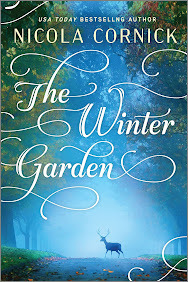 Nicola Cornick,
The Winter Garden
Nicola Cornick,
The Winter Garden
(Graydon House Books, 2022)
As a child in the UK, I loved the fireworks and bobbing for apples and such that commemorated the foiling of the Gunpowder Plot in 1605. Guy Fawkes Day on November 5 is similar to Halloween in the US. This, the latest of Nicola Cornick’s dual-time novels, casts a very different, more revealing eye on the tensions that led to a Catholic attack on Parliament that would have destroyed a Catholic king if it had succeeded.
In the present, a violinist stripped of her performing ability by a virus struggles to find peace at a rural English estate where a pair of brothers have been trying to restore a lost Tudor garden. In the past, a determined woman does her best to prevent her son from taking a path that might destroy their entire family. Both stories are beautifully told, gripping, and believable, and I’ll be talking with Cornick next week for the New Books Network.
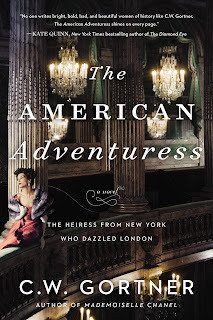
C. W. Gortner, The American Adventuress
(William Morrow, 2022)
I’ve enjoyed several of Gortner’s novels by now, and this latest is no exception. He has a gift for finding real-life women who have been overlooked or undervalued and revealing them in all their dramatic complexity. Here his subject is Jennie Jerome, the American heiress who became the mother of Winston Churchill as well as one of the many paramours of Bertie, Prince of Wales—the future King Edward VII of England. Jennie is by turns imperious, vulnerable, loving, self-centered, resolute, and blind to the negative impact of her own choices, but she is never less than magnificent. I look forward to chatting with her creator in December.
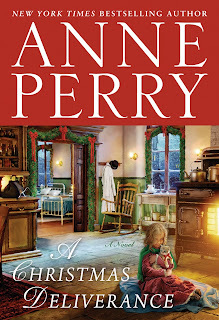
Anne Perry, A Christmas Deliverance
(Ballantine Books, 2022)
This one didn’t arrive in time for my holiday roundup three weeks ago, which is too bad. I have loved Anne Perry’s Thomas Pitt and Inspector Monk novels for many years, and I enjoyed the predecessor to this novella—last year’s A Christmas Legacy.
In this new one, a doctor who has worked his way up from poverty and a young girl he rescues fight to treat patients while the doctor who owns the clinic investigates a potentially abusive situation. I have no particular plans to cover it except through a NetGalley review, but I’ll have fun reading it even so.
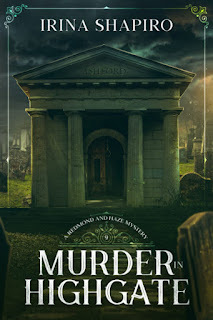 Irina Shapiro, Murder in Highgate
Irina Shapiro, Murder in Highgate
(Merlin Press, 2022)
Ninth in the Redmond & Haze mystery series, this novel has been on my tablet for a while as I cleared other books for interviews and blog posts—many of them listed here. If you haven’t encountered the series before, definitely start with the first, Murder in the Crypt, and follow them forward to avoid spoilers in the developing friendship between Jason, the earl of Redmond, and Daniel Haze.
Redmond is a US Civil War surgeon and a reluctant peer, so he assists Haze, an English police officer who has moved from London to the countryside at the beginning of the series, with post mortems and sleuthing. The books are fast-paced and intricately plotted, giving an excellent return on the investment of a reader’s time. You can find out more about the series from my interview with the author earlier this year.
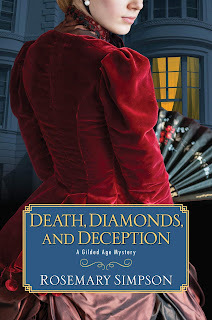
Rosemary Simpson, Death, Diamonds, and Deception
(Kensington Books, 2020)
Rosemary Simpson is another writer whose work had escaped me until her publicist dropped the latest in this, her Gilded Age Mystery series, on my doorstep a few months back. In preparation for a blog Q&A with Simpson right after Thanksgiving—#7 in the series, Death at Niagara Falls will be published on November 29—I read the first and third novels when they were on sale earlier this year.
This is the fifth, and I look forward to finding out more about the high-society heiress Prudence Mackenzie, her ex-Pinkerton sleuthing partner Geoffrey Hunter, and especially her autocratic Aunt Gillian, who in true Gilded Age fashion married into the English aristocracy as Lady Rotherton and has now returned to her native New York to assist—not to say torment—Prudence in finding a suitable husband. Naturally, those plans go awry, and soon Mackenzie and Hunter are knee-deep in jewel theft and murder.
October 28, 2022
The Housekeeper's Little Grey Cells
 My mother was a huge fan of Agatha Christie. I grew up around those novels—often in multiple copies, because the publishers changed the titles over the years, and it wasn’t always clear which novels were new and which recycled, so to speak. Although my personal favorite was always Dorothy L. Sayers, especially after Harriet Vane joined Lord Peter in Strong Poison, I happily devoured every one of Christie’s classics that I could get my hands on.
My mother was a huge fan of Agatha Christie. I grew up around those novels—often in multiple copies, because the publishers changed the titles over the years, and it wasn’t always clear which novels were new and which recycled, so to speak. Although my personal favorite was always Dorothy L. Sayers, especially after Harriet Vane joined Lord Peter in Strong Poison, I happily devoured every one of Christie’s classics that I could get my hands on.I wasn’t quite sure, when Kensington Books pitched me on an interview with Colleen Cambridge, that a new series based on Agatha Christie’s fictional housekeeper was really a good idea. How could the new books compete with the old?
But having read two, I can say that they do. In some ways they even surpass the originals by redirecting their focus to the “downstairs”—that is, the servants, whom Phyllida manages with the sometimes assistance/sometimes animosity of Mallowan Hall’s butler, Mr. Dobble. It all gives the story a modern twist that is very refreshing. So don’t just indulge yourself. Listen to our interview at the New Books Network to find out more about this project before diving in.
The rest of this post comes from New Books in Historical Fiction.
Agatha Christie hardly needs an introduction. The Queen of Mystery has reigned since the 1920s, and the recent release of films based on her books shows that her popularity is in no danger of waning anytime soon. It takes a certain audacity to create an amateur detective who, while managing Christie’s household, outpaces her employer in solving crimes. But Colleen Cambridge pulls off this task with aplomb. In a nod to one of Christie’s best-known and most highly regarded novels, the series opens with a body in the library at Mallowan Hall, the rural estate where the author lives with her second husband.
Phyllida—who admires Hercule Poirot, Christie’s most famous creation—seeks to apply his principles of detection to that dead body in the library, and she succeeds admirably. When the second book, A Trace of Poison, begins, Phyllida is organizing a village celebration aimed at raising the necessary funds to repair the roof of an orphanage run by the local Catholic church. Four famous mystery writers—Dorothy Sayers, G.K. Chesterton, Anthony Berkeley, and Christie herself—have agreed to sign copies of their books and to award a short-story prize guaranteeing international publication to one lucky local writer. But at the reception on the first evening, someone is murdered. The stolid but unimaginative police are called in, and again it is up to Phyllida to find out what really happened.
There can be few things more fun to write than fiction about other writers, and it’s clear that Cambridge is having a blast with every tongue-in-cheek reference. The crimes are inventive, the solutions satisfying, but at least as interesting are Phyllida’s interactions with her staff and the villagers of Listleigh. She has her flaws, and we learn early on that she has secrets. At the same time, she is observant, caring, perceptive, and daring, and watching her figure out the clues that befuddle even the police is pure joy.
October 21, 2022
New Friends
As hinted in my previous post, the composition of our household has changed since I last wrote. This was a planned expansion, and a happy one. In fact, we’ve been waiting six weeks for the latest additions to our cat family to grow to an age where they could leave their mother. But on Saturday, Sir Percy and I drove south to collect them. It was a beautiful fall day, the leaves just starting to turn, and once we left the highway, a lovely drive along quiet country roads. We met the breeder and her cats—until then, Covid and distance meant that all contact took place through text messaging and video calls—and an hour or so later were back in the car, heading home with two silent kittens in a carrier.
 Now, those who follow my Instagram and TikTok posts will know that I am currently enjoying a mystery series featuring a large orange tabby named Max, who with his friends solves a series of crimes and has the capacity to communicate with some of his humans (as well as many other gifts not shared with most cats, such as the ability to read and even to surf the Web on a touch screen). It’s a delightful series, however improbable, and one of the books features a trio of kittens left in a box on Max’s doorstep, to the great dismay of him and his pals. Kittens are so cute, you see, and so rambunctious and unruly and disrespectful of older cats and their body parts, especially those delightfully twitchy tails. Of course, by the end of the novel, Max has made his peace with these tiny invaders. What happens beyond that, it would be unfair to reveal.
Now, those who follow my Instagram and TikTok posts will know that I am currently enjoying a mystery series featuring a large orange tabby named Max, who with his friends solves a series of crimes and has the capacity to communicate with some of his humans (as well as many other gifts not shared with most cats, such as the ability to read and even to surf the Web on a touch screen). It’s a delightful series, however improbable, and one of the books features a trio of kittens left in a box on Max’s doorstep, to the great dismay of him and his pals. Kittens are so cute, you see, and so rambunctious and unruly and disrespectful of older cats and their body parts, especially those delightfully twitchy tails. Of course, by the end of the novel, Max has made his peace with these tiny invaders. What happens beyond that, it would be unfair to reveal.I read this novel twice during the six weeks of waiting, as a way of mentally preparing myself for the possible effects of introducing two newcomers to my adorable but aging matron, Mahal. Would she welcome the arrival of the kittens she had never had the chance to have? Or would she feel threatened? Either was possible. This isn’t the first time I’ve brought a kitten into my family, but the last introduction was Mahal herself, almost fourteen years ago. And I’ve lived with enough cats over the years to know that each combination is different.

What I hadn’t quite counted on was that these two kittens are nothing like their unruly fictional counterparts. They are certainly lovable and cute as the proverbial buttons, and as each day passes they are warming up to us a little more. But they are not rambunctious, and they don’t act as if they own the place—at least, not yet. They are brothers, the only two in their litter, and within moments of their exit from the cat carrier I realized that from their perspective what happened on Saturday was an unmitigated disaster.
One can hardly blame them for seeing it that way. They woke up that morning with their mother and another female cat who acted as a second mother, as well as a human they had known since birth. Then two strangers showed up, and before long they were stuck in a cage, heading who knew where. And when the cage door opened, there they were, in a place they didn’t recognize. No mother, no second mother, no familiar territory, no people except those two strangers. They had only each other, and until this morning, when the seal point ventured out of the small room that has housed them since their arrival, each of them has stayed within sight, sound, and (mostly) touch of his twin. Meanwhile, Sir Percy and I have made frequent visits, done our best to ensure their comfort, induced them with little success to relax enough to play, and supplied as much petting as they will accept. We can guess that at night they come out and run around, because the food gets eaten and toys mysteriously change their locations between midnight and morning, but we don’t hear them or see those nocturnal activities. (Cats are, of course, nocturnal by nature.)

What they don’t know is that at the place they left their second mother has given birth to another litter, and their own mother, after a couple of days of calling for them, has turned her attention to the new batch of babies. But since we don’t speak cat, as Max’s human does, that bitter truth will remain forever hidden from them.
Mahal, so far as we can tell, doesn’t yet know that her three years of solitude have ended. We’ve kept them apart because the kittens have enough to deal with—although if Mahal accepts them readily, she can offer the kind of comfort that only another cat can provide. And she may, because she spent her first eleven years with our sweet Jahan and has shown signs of loneliness ever since his passing. That bridge has still to be crossed, but we can hope that the introduction, when it inevitably occurs, will go well. Siamese love to snuggle together, and that’s exactly what the little ones need right now.
So stay tuned for updates. Meanwhile, I will continue to follow the adventures of Max and his friends—even as I monitor the very different situation developing in my own home.
October 14, 2022
Christmas in October
Many people have heard of Christmas in July, a neat bookend to the traditional December holiday. But for the commercial publishing industry, Christmas starts in October. That’s when holiday-themed titles begin to be released in time for early-bird shoppers—or at least in the hope of establishing enough buzz to generate sales.
My first comment is that things seem to be getting off to a slow start this year. In 2021 at this time, I had at least twice as many feel-good Christmas books on my bookshelf and my phone. This year, I have beautifully written novels releasing in late fall and early winter—Nicola Cornick’s The Winter Garden, for example—but only two that explicitly reference the holidays. A delayed effect of the pandemic, maybe? The last few years haven’t exactly been sunny and bright.
But that said, here’s a quick look at the Christmas-connected books that have crossed my desk so far—with hopes there may yet be more to come.
 Vanessa Kelly,
The Highlander’s Holiday Wife
(Zebra Books, 2022)
Vanessa Kelly,
The Highlander’s Holiday Wife
(Zebra Books, 2022) This latest addition to the author’s Clan Kendrick series pairs Braden Kendrick, a doctor set on working among Edinburgh’s considerable slums, and Lady Samantha Penwith, a young widow set on avenging her husband’s death—a quest that takes her, dressed as a man, to the same murky areas of the city. It’s November 1826 when Braden runs into trouble in a dark alley and Samantha rescues him. Of course, he has no idea who she is, but he makes it his mission to find out. Hers, naturally, is to elude pursuit.
Braden is a good-hearted and appealing hero, although to me Samantha is the more complicated and therefore the more interesting half of the prospective couple. But lovers of historical romance will revel in this fast-moving tale with its exploration of the highs and lows of Scottish society under King George IV and its snappy dialogue. By the time you reach the end, you will not only be rooting for Braden and Samantha to get together but will also feel quite ready for fir trees, Hanukah candles, presents, and anything else you normally do to celebrate the great turn of the Earth and the prospect of more sunlight for the next six months.
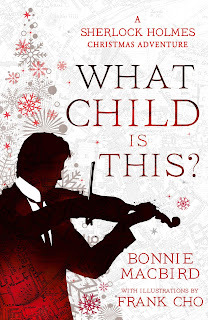
Bonnie MacBird, What Child Is This? (Collins Crime Club, 2022)
If you haven’t already encountered Bonnie MacBird’s take on Sherlock Holmes (Art in the Blood, Unquiet Spirits, The Devil’s Due, and The Three Locks), I wholeheartedly recommend them. I had a great time interviewing her last year about the series for the New Books Network, and I was impressed by how well she balances respect for the Holmes canon with her own take on the characters.
What Child Is This? follows through in both respects. Specifically labeled as a Christmas Adventure, it includes delightful illustrations by Frank Cho. In short, the premise is as follows: Holmes, perhaps unsurprisingly, adopts a gloomy stance toward Christmas, eschewing all forms of holiday glee. Watson, also running true to character, loves every snowflake and strand of tinsel. As the two of them stroll down a London street—one complaining, the other filled with seasonal joy—they interrupt an ongoing kidnapping, restoring the child to his mother.
Shortly thereafter, Holmes gets a new commission: to find a marquis’s missing son. He accepts, to pass the time until the world stops celebrating, but his interest lies more with the kidnapping: what lay behind it, whether the villain will make another attempt, and how to protect the innocent child, who was born on Christmas Day and bears a birthmark resembling the Star of Bethlehem.
How these two cases intertwine—or don’t—makes for a delightful and ultimately touching read, one that at 225 pages can easily be fitted in around bouts of shopping and preparations for entertaining family and friends.
For the other, non-holiday-themed titles on my bookshelf, check back toward the end of the month. Next week is reserved for a forthcoming change to my household (hint below). More on that soon.

October 7, 2022
The Glory Days of Hollywood
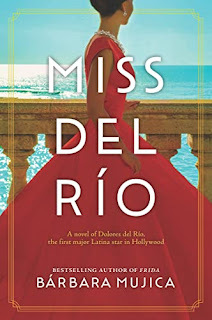 As you can probably tell from all the book-related posts, I am, first and foremost, a reader. I enjoy movies, and there are even films I love and watch over and over, but I tend not to read reviews and I certainly haven’t spent a lot of time thinking about the early days of Hollywood. On the contrary, most of the little I do know comes, paradoxically but predictably, from novels such as Joy Lanzendorfer’s Right Back Where We Started From, featured on this blog in July 2021.
As you can probably tell from all the book-related posts, I am, first and foremost, a reader. I enjoy movies, and there are even films I love and watch over and over, but I tend not to read reviews and I certainly haven’t spent a lot of time thinking about the early days of Hollywood. On the contrary, most of the little I do know comes, paradoxically but predictably, from novels such as Joy Lanzendorfer’s Right Back Where We Started From, featured on this blog in July 2021.I was interested, though, when Graydon House proposed Bárbara Mujica’s Miss del Río for a New Books Network interview. The star here is not only a Hollywood actress but part of the Mexican community of actors who left their homeland to make their careers in Los Angeles in the 1910s and 1920s. Moreover, having fought to break out of clichéd starlet roles, del Río then went back to Mexico and played a role in the establishment of that country’s film industry. And that’s just the fictionalized real-life story. Another, wholly fictionalized mirror story proved to be even more compelling. Read on to find out more.
As usual, the rest of this post comes from New Books in Historical Fiction.
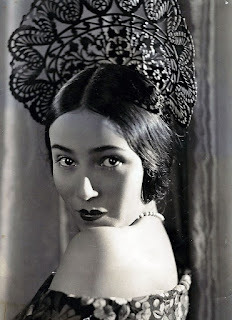
Miss del Río explores the biography of a real-life actress, Dolores del Río, who became a silent movie star in Hollywood, navigated the transition to talkies, and eventually played a role in the establishment of the film industry in her home country of Mexico. The story plays out against the backdrop of the Mexican Revolution, which influences the lives of the characters in ways both direct and subtle. Add to all this a dramatic tale of the fictional María Amparo (Mara)—Dolores’s hairdresser, confidante, and wry chronicler—and you have a novel that breaks new ground in interesting ways.
The novel opens with Mara late in life, remembering a friend whose commemoration Mara herself is too old and frail to attend. From there, we move back to the outbreak of the Mexican revolution, with Mara a small child being dragged through the streets by her caretaker, a rough woman known as Tía Emi throughout the book. Through Mara’s eyes, we see her first encounter and budding relationship (whether it is truly friendship is an ongoing theme) with the child Dolores, whose background is very different from Mara’s. Mujica then follows the lives of both women as they interact, overlap, and at times separate throughout Dolores’s career.
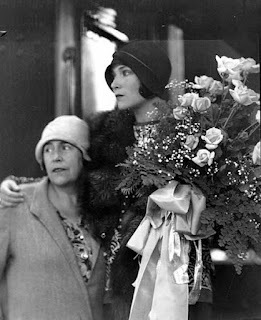
But Mara has a story of her own: to find out who her mother was, what happened to her, and how Tía Emi became Mara’s caretaker. It’s a tale even more compelling than Dolores’s fight to be taken seriously in her chosen career, and through it, Bárbara Mujica pulls us along to a dramatic finale and a satisfying conclusion.
Images: Dolores del Río in Joanna (1925), her first starring role, and with her mother (1930), both public domain via Wikimedia Commons.
September 30, 2022
Wrexford and Sloane Return
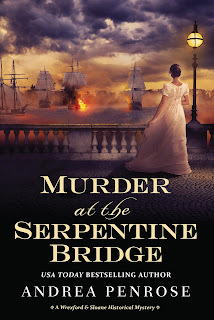 As noted earlier, I love Andrea Penrose’s Wrexford & Sloane series—also her ongoing Lady Arianna Hadley series, which has some interesting overlaps in terms of characters with Wrexford & Sloane (on which, more below). I interviewed the author last year when Murder at the Botanic Gardens came out. You can find out quite a bit about the main characters and their relationships, as well as the Napoleonic/Regency background of both series, by listening to that interview. You can also find out more about series, author, and background at http://andreapenrose.com.
As noted earlier, I love Andrea Penrose’s Wrexford & Sloane series—also her ongoing Lady Arianna Hadley series, which has some interesting overlaps in terms of characters with Wrexford & Sloane (on which, more below). I interviewed the author last year when Murder at the Botanic Gardens came out. You can find out quite a bit about the main characters and their relationships, as well as the Napoleonic/Regency background of both series, by listening to that interview. You can also find out more about series, author, and background at http://andreapenrose.com.One thing that sets the series apart, in addition to fascinatingly complex characters and richly and often beautifully described settings, is that each novel explores a scientific development that began during the English Regency and still influences our world. In this case, that invention involves military technology. I can’t say more because discovering exactly what the invention is and what happened to the plans for it consumes the first half of the book. But I will say that the invention, were it to succeed, would give whatever country controlled it a distinct advantage over its enemies. At a moment when Napoleon appears to have finally been defeated and sent to exile on Elba, the possibility that said invention could fall into the hands of the French has all the Allied Powers sweating. Most of them don’t trust each other any more than they do the French, which has them all at one another’s throats. That we know Napoleon won’t be on Elba for long (even though the characters don’t) just ups the ante.
Fans of Penrose’s other Regency series featuring Lady Arianna will be happy to see the arrival of Lord Grentham, the mysterious and ruthless minister of state security, with this novel. Charlotte Sloane’s two urchins also make a new friend, and Wrexford and Sloane’s partnership continues to develop, as do certain other relationships. But this installment is not just a worthy addition to the series; it is my favorite so far. The only downside of getting my hands on it early is that I’ll have to wait even longer for the next one. But Murder at the Serpentine Bridge is out as of this Tuesday, so you don’t have to wait.
In the absence of greater detail of what to expect, I can offer, with the permission of Kensington Books, the following excerpt from the Prologue to give you a taste of what’s to come. Alas for poor Willis, things only go downhill from here.

Darkness had settled over the city, and yet the night was quite pleasant, the first hints of summer warmth softening the breeze. The lone figure stood on the front steps of the elegant townhouse, taking a moment to savor the stillness and the play of moonlight on the ornamental plantings before turning his steps for the street.
The hour was late, and no clatter of carriage wheels echoed off the surrounding stone and brick. “Peace and quiet,” murmured Jeremiah Willis, after looking up and down the north side of Montpelier Square. “Thank God.” Not that the evening hadn’t been enjoyable. The conversation had been interesting—how could it not have been, given the subject?—and the meal superb. Still, the cacophony of voices clashing with the clink of crystal and silver had begun to make his skull throb.
“Though maybe,” reflected Willis, with a wry smile, “the headache had more to do with the very fine brandy poured after supper than anything else.” He drew in a deep breath.
Only to regret it. After all these years, he still hadn’t reconciled himself to London’s foul-scented air. Oh, how he longed for …
But Willis quickly pushed the thought from his mind and began walking. He had made choices in life that required sacrifices. He didn’t regret them.
The sound of his steps on the cobblestones seemed unnaturally loud as he turned up Charles Street and came to Knightsbridge, the main road skirting along the south edge of Hyde Park. Feeling a little muzzy from all the wine and spirits, he looked around for a hackney.
But oddly enough, there wasn’t a vehicle to be seen. Even the area around the Life Guards barracks was deserted.
It must be even later than I thought.
Photograph of the Serpentine Bridge from below public domain via Wikimedia Commons.
September 23, 2022
Down the Rabbit Hole
This post ran a few weeks ago on our Five Directions Press blog, but since I haven’t had a writing post in a while, and I was the one who produced it, I decided to repost it here.
Down the Rabbit Hole,
Or, How Not to Get Lost in Your Research
As a historical novelist, I do a lot of research. As the host of New Books in Historical Fiction, I interview people who do a lot of research. And since I was a historian before I became a historical novelist, I have to admit that I’m naturally drawn to research. In fact, it’s my favorite part of planning a novel: delving into areas I know nothing about, despite all the years I’ve spent studying early modern Russian history. I have in mind things like Tatar views of religion (The Golden Lynx and The Winged Horse, also Song of the Shaman), banditry in the northern forests (The Swan Princess), the politics of Renaissance Poland (Song of the Siren), sixteenth-century herbal medicine (The Golden Lynx, The Swan Princess, Song of the Steadfast), Ivan the Terrible’s bride shows (Song of the Storyteller), and, of course, the specific political events of any given year, which form the backdrop to all my Russian novels.

The catch is that, just as with characters’ backstories, writers need to know far more about the historical specifics than readers do. It’s a pretty safe bet to say that we’ve all read novels where the author couldn’t resist throwing in every tiny fact or descriptive detail that crossed their path, to the point where our eyes glaze over and we start to wonder whether we really need ten pages on the Battle of Wallingford to understand why the hero admires the heroine.
The problem extends beyond historical fiction, of course. I’ve struggled through contemporary romances where the author lovingly describes every Armani suit and ornamental flourish, fantasy and science fiction novels that spend more time building the world or explaining the technology than presenting characters I care about, and mysteries so focused on the appearance of a body that the personality of the victim fades from view. Without enough detail, a novel can’t come to life and pull the reader in, but too many details smother the story. So where do we draw the line? Or perhaps a better question, for those of us who see research as fun in and of itself, how do we rein ourselves in?
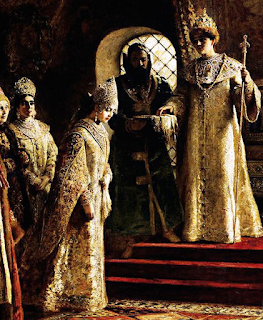
My own approach may not work for every author, but I’ve honed it over the years and pass it along for you to use as seems best to you. In short, I force my research to serve the story rather than exist on its own. Right at the beginning, when I’m thinking about a new book, I start with the characters. Who are the leads? What do they want, at this moment in their lives and long-term? How old are they, and what do they look like? Which social group do they belong to, and how does that affect them? What is their cultural background? Who will stop them from getting what they want?
The answers to most of these questions don’t require research, only imagination—although cultural backgrounds and the lives of people outside the elite can require a bit of digging, especially when the genre is historical. But once I have a sense of whom I’m dealing with and where and when, then I put in as much time as I need to find out, as specifically as possible, what was happening at that moment in history. This can be unexpectedly difficult: most history books don’t operate at the level of individual years, never mind months or days. But I get as close as I can.
What I’m looking for at this early stage is points of tension and conflict, challenges my hero and heroine must overcome, events that would affect them emotionally. I’m also looking for possibilities I might not have considered: arguments about why someone in power made this decision or that, so I can pick the variation that has the greatest dramatic potential. I try not to be flat-out wrong, but where there are multiple explanations, I worry less about which one is “right” than which one will produce the most exciting story and cause the most trouble for my protagonists. I make a list, interspersing those events with the stages of my main characters’ development, turning the general “this happened then” into something my hero and heroine might actually experience and react to in ways that will force them to grow. If an incident—however fascinating—doesn’t contribute to those character arcs, I jettison it. Wistfully, sometimes, and with the hope it will work later on, but ruthlessly.
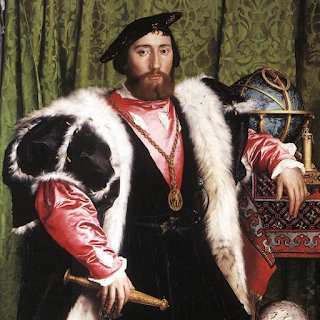 Once I have a complete list of story events, I set the research aside. From then on, I focus on answering specific questions as they arise. Do I need to know what a sixteenth-century Russian healer would use to treat fever? I search for an answer to that question. Am I wondering what mica windows actually looked like? I go online and try to find pictures. Does my character need a suitable ballgown for Kraków in the 1540s—or the 1560s? I check out paintings from that time and pick elements that fit her style. The Internet is an amazing resource, but if you’re not careful, it can suck you in and churn you into butter before it spits you out.
Once I have a complete list of story events, I set the research aside. From then on, I focus on answering specific questions as they arise. Do I need to know what a sixteenth-century Russian healer would use to treat fever? I search for an answer to that question. Am I wondering what mica windows actually looked like? I go online and try to find pictures. Does my character need a suitable ballgown for Kraków in the 1540s—or the 1560s? I check out paintings from that time and pick elements that fit her style. The Internet is an amazing resource, but if you’re not careful, it can suck you in and churn you into butter before it spits you out.Of course, I’m no less susceptible than anyone else to the lures of procrastination. Sometimes I too dive into a research rabbit hole and don’t emerge for days. But most of the time, this method works. And when I do forget and throw in more information than any reader really wants to know, I can always rely on my trusty critique partners to point out where I lost them.
That brings me to my last suggestion for avoiding the research trap: beta readers. Whether it comes from fellow writers or avid bookworms, there’s nothing like friendly feedback to keep a writer from supplying not enough information—or, more often, too much. Just remember: in the end, readers don’t care how many hours you spent perusing books and websites. They want a good, fast-paced story—rich in description and complex characters, yes, but not at the expense of the action. Keep that point in mind, and your research will remain in the background, where it belongs.
Images: Photograph of my overstuffed bookshelf © 2021 C. P. Lesley; cropped paintings by Konstantin Makovsky, The Tsar Chooses a Bride (1886) and Hans Holbein, The Ambassadors (1533)—my inspiration for the bride show in Song of the Storyteller and Felix in Song of the Siren, respectively—public domain via Wikimedia Commons.
September 16, 2022
Miss Marple Returns
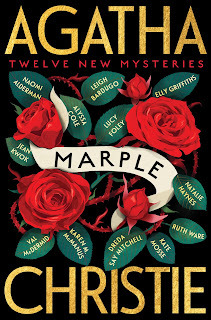 Like many others, I have long been a fan of Agatha Christie—especially her creation of Miss Jane Marple. At one time or another, I have read all the Marple books, most of them more than once. So the idea of twelve new mysteries written by a collection of accomplished authors immediately appealed to me as both a reader and a novelist. But interviewing twelve authors posed a technical challenge. So the publicist and I came up with the idea of asking a single question and inviting authors to send their answers. Not everyone chose to participate, but at least half did. So here are some of the thoughts behind
Marple: Twelve New Mysteries
.
Like many others, I have long been a fan of Agatha Christie—especially her creation of Miss Jane Marple. At one time or another, I have read all the Marple books, most of them more than once. So the idea of twelve new mysteries written by a collection of accomplished authors immediately appealed to me as both a reader and a novelist. But interviewing twelve authors posed a technical challenge. So the publicist and I came up with the idea of asking a single question and inviting authors to send their answers. Not everyone chose to participate, but at least half did. So here are some of the thoughts behind
Marple: Twelve New Mysteries
.But first, the book summary.
One doesn’t stop at one murder...
Jane Marple is an elderly lady from St Mary Mead who possesses an uncanny knack for solving even the most perplexing puzzles. Now, for the first time in 45 years, Agatha Christie’s beloved character returns to the page for a globe-trotting tour of crime and detection.
Join Marple as she travels through her sleepy English village and around the world. In St Mary Mead, a Christmas dinner is interrupted by unexpected guests; the Broadway stage in New York City is set for a dangerous improvisation; bad omens surround an untimely death aboard a cruise ship to Hong Kong; and a bestselling writer on holiday in Italy is caught in a nefarious plot. These and other crimes committed in the name of love, jealousy, blackmail, and revenge are ones that only the indomitable Jane Marple can solve.
Bringing a fresh twist to the hallmarks of a classic Agatha Christie mystery, these twelve esteemed writers have captured the sharp wit, unique voice, and droll ingenuity of the deceptively demure detective. A triumphant celebration of Christie’s legacy and essential reading for crime lovers, Marple is a timely reminder why Jane Marple remains one of the most famous detectives of all time.
And now, the question—and the authors’ answers.
What inspired your particular story, and was it a challenge to blend your own voice with Agatha Christie’s?
Alyssa Cole: My story, “Miss Marple Takes Manhattan,” has her traveling to New York City to see a stage adaptation of one of her nephew Raymond’s novels. It was also inspired by the somewhat bittersweet undercurrent of the later Marple novels, where she is undergoing the mundane decline of being elderly, very much aware of it, but also still has what it takes to investigate and solve mysteries!
My story is an homage to the fact that Christie is the most successful female playwright ever; I figured if I was going to bring her to Manhattan, theater was a great backdrop to the mystery! It was challenging, but also fun! I focused on the aspects that stood out to me from Christie's writing—the humor, the subversiveness hidden by the presence of an elderly British woman, and the observational nature of Miss Marple. These were the aspects that I connected with most, and that I then tried to convey through my voice and writing style, but following her general lead.
Jean Kwok: I was inspired by Agatha Christie’s A Caribbean Mystery while writing my story, “The Jade Empress,” in which Miss Marple meets an elderly Chinese gentleman and his daughter on the deck of the Hong Kong–bound cruise ship The Jade Empress. The next morning, it is revealed that the gentleman has died of poisoning. Suspicion falls on his caretaker, a Chinese woman who performs all sorts of unusual rituals, but the daughter is certain that someone else must be to blame. When the caretaker’s body is discovered the next day, it’s up to Miss Marple to uncover the truth.
It was a challenge to attempt to channel Christie, of course, but it was also a true pleasure. I loved trying to hear Miss Marple in my mind. She has such a delightful, wry, and humorous voice. It also made me appreciate how brilliant Christie was at plotting, especially the ways in which she would ensure that the reader had all the clues they needed to solve the mystery without making anything too obvious.
Ruth Ware: I always felt aggrieved that while Poirot has not one but two Christmas stories, Miss Marple doesn't really have a proper one—just a rather sad murder that happens while she's Christmas shopping. I know that Christie loved Christmas—she wrote a long essay about her appreciation of a proper country Christmas—and I felt a little sad that Miss Marple never got to enjoy a real St Mary Mead Christmas in fiction, so I wanted to give her one!
Lucy Foley: My story was inspired by Sussex, the part of England I come from, and the rather pagan goings on that can still be found in several of the local villages and towns! I was certainly a little nervous about stepping into the great Agatha Christie’s shoes, but reading and rereading all of the Marple books and stories and really immersing myself in all things Marple helped hugely with getting the tone right and feeling confident writing about that world.
Kate Mosse: Although Christie’s Miss Marple appears in a handful of short stories, and then her first full length novel in 1930 (The Body in the Library), most of Jane Marple’s appearances happen in the time after the Second World War when life in England was changing quickly, and sometimes bewilderingly. Like many of my fellow contributors, I reread all of the Marple short stories and novels before starting to write, looking for biographical clues to Miss Marple’s life. Once I realized Jane Marple had an uncle who was a canon in Chichester Cathedral, the city where I grew up and live, I decided to set my story there in the years after the end of the war when the National Health Service had just come into being. “The Mystery of the Acid Soil” is a story of two older women, Jane Marple and her friend Emmeline Strickert, who discover a murder that no one else had even realized had taken place. The writing was a joy from start to finish, and I hope that the story will not only please die-hard Marple fans like myself, but also introduce a new generation of readers to the one and only Miss Marple.
And thank you to all the authors who participated in this Q&A. May you have many readers!



